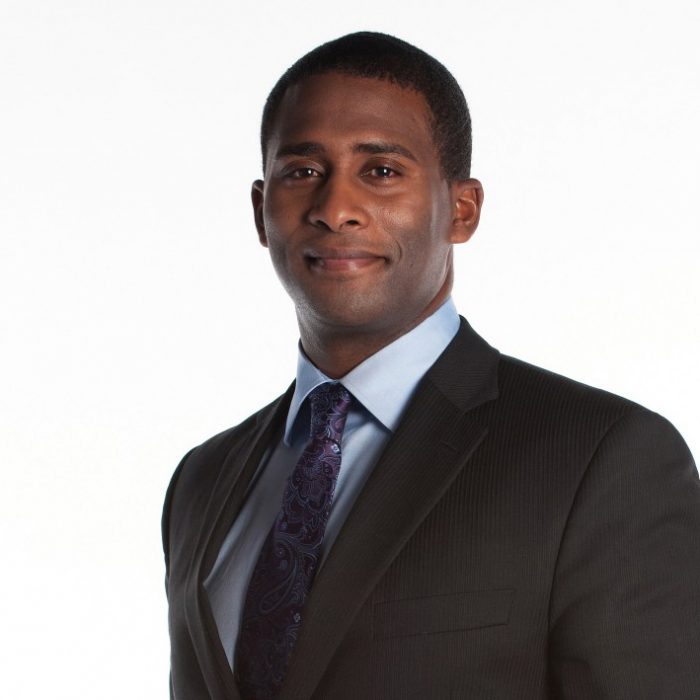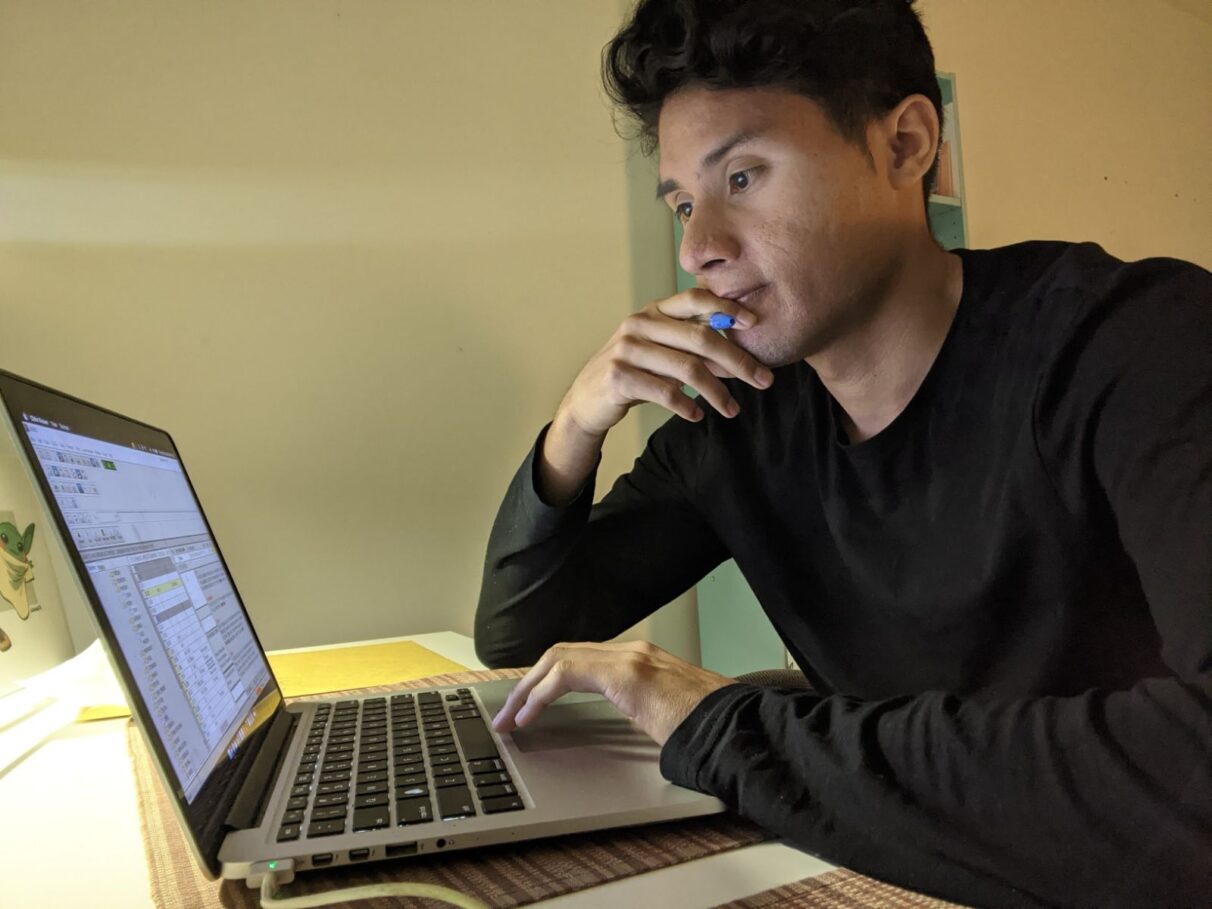Belonging and reporting

caption
Minority journalists navigate the tightrope of belonging to a community they report on.Journalists from minority groups often face additional challenges when reporting on their communities.
Often, on the night before his news story’s publication, David Thurton can’t sleep. A feeling of uneasiness settles over him and he asks himself, “Did we get the facts right?”, “Are we going to cause more harm than good?”
Thurton is a senior reporter and parliamentary correspondent with CBC Ottawa. While he was born in Canada, he was raised in Trinidad and Tobago. Whenever he covers stories about racialized communities, Thurton says he feels a greater sense of responsibility to get it right. And often, the night before a story comes out, his anxiety takes over.
“My Blackness is certainly part of my identity and who I am,” says Thurton. “And I think what it does for my journalism is, it gives me a lived experience, and a different sort of perspective that maybe not all journalists, whether they’re journalists of colour, whether they’re white journalists, don’t necessarily have, where I’m able to spot certain stories, where I’m able to understand the context and the background of certain stories about the Black community, the immigrant community, or even communities of colour.”
Due to their background, culture, identity or community of origin, some journalists find themselves in situations where they become their newsroom’s reference for everything related to their community. They must respect the principles of fairness while grappling with their partiality. But they may also offer a better insight into their community than other journalists.
“I think any journalist who comes from a particular community or a particular background, maybe feels the weight of telling that community’s stories,” says Thurton. “And not only telling it but telling it in the right way.”
A push for representation
Adrian Harewood’s time as a student activist at McGill University in the early 1990s brought him to journalism. At the time, anti-appartheid activist Nelson Mandela was still in a South African jail. As part of the Black student network, Harewood was committed to ending inequities and trying to bring change not just to South Africa and other parts of the world, but in his own community as well.
Harewood did not feel represented in either mainstream journalism or campus media. As a political science and history student, he started contributing to the campus newspaper, The McGill Daily.
Today, Harewood is a journalist and associate professor at Carleton University. He hosted CBC’s Ottawa radio show All in a Day and anchored the CBC’s evening news in Ottawa for more than a decade.
“People come to journalism for different reasons,” says Harewood, citing interest in storytelling, investigative work, and challenging power as reasons why journalists join the field. “They come to journalism, sometimes because of the harm that journalism itself has had on them and on their communities.”
In its 2022 survey, the Canadian Association of Journalists (CAJ) said Indigenous people as well as those who identify as Black, Latin, mixed race or Middle Eastern journalists make up about 20 per cent of Canadian journalists in newsrooms.[GU1]

caption
Adrian Harewood.Despite these troubling numbers, some journalists from racialized communities see their diverse identities as an opportunity.
Jan Wong, an Asian-Canadian academic, journalist, and non-fiction writer, is best-known for her work at The Globe and Mail. From the start of her career, Wong saw her ethnicity as an advantage. “I saw no one in print reporting who looked like me,” says Wong. “I was also interested in my heritage; I didn’t know much about it. So that’s why it was actually a deliberate career choice.”
Wong worked as The Globe’s correspondent in Beijing for six years. “Because I was ethnic Chinese, I had way more latitude to criticize China,” says Wong.
But for Wong, reporting on her community was also complicated.
“You get stereotyped,” says Wong. “The idea of using my ethnicity to carve a niche. It’s a trump card, it’s a weakness, but it’s also an ace. So, it depends how you use it.”
Establishing a connection
The public puts great value on journalists who understand the history of the community they report on and are in touch with their communities.
Survey data released in 2021 by the polling firm Ipsos indicates that three in four Canadians say it is important for them to see and hear diverse voices in the Canadian news media. Just over 80 per cent of Black, Indigenous and other people of colour (BIPOC) think that Canadian news media should increase the diversity of their reporting staff.
CBC journalist Shlok Talati grew up in India. But these days he covers the South Asian community in Saskatchewan, where he says he is working hard to establish trust.
Talati sees the South Asian diaspora as complex. “There are so many different cultures, there are so many different people coming from so many different backgrounds,” he says. “Even if there’s something South Asian, that definitely doesn’t mean that I know everything about it, because it’s so different from where I grew up.”
Challenging the vision
“I think a lot of Canadians who come from second- or third-generation backgrounds, and they grow up in Canadian society sometimes feel a bit lost, like, ‘Who am I? Am I Canadian? Am I Trinidadian? Am I a bit of both?’” says Thurton. “There’s a sense of longing to visit the homeland and the motherland.”
In his reporting, Jim Agapito wants to reflect the parallel between his two worlds: the Filipino and Canadian communities. “It’s understanding that my Filipino community needs to know what’s going on with my younger community,” says Agapito.
Agapito, 43, is host of the CBC Manitoba podcast Recovering Filipino, which focuses on his Filipino heritage and journey of self-discovery.
Growing up as a “punk,” Agapito says he did not pay much attention to his culture. He chose podcasting to teach and learn about Filipino culture in a relatable way. “If I have these questions, generations before me have these questions, and even probably the greater diaspora have these questions,” he says.
A difficult responsibility
Olena Goncharova cannot turn off the news.
Goncharova is a Canadian correspondent working for the Kyiv Independent, a Ukrainian English-language newspaper. She is based in Edmonton. In the years before the 2022 Russian invasion, she covered the Ukrainian Canadian community, doing stories on a Ukrainian-language program at local schools in Alberta and Ukrainian dance groups in Canada. Today, while she lives in Canada, her reporting focuses on the war in Ukraine.
“There were days when I cried at my computer more than once,’ she said in an email interview. “However, I am always keeping in mind why I’m doing what I’m doing. I like to tell stories; people like to read those stories. It definitely helps to bounce back.”
Journalists are taught they should be impartial, but it is difficult to set emotions aside when your native country is invaded.
“When I feel that I can’t handle it, I just give myself a 10-minute break and let myself experience all the emotions I have at the moment,” Goncharova writes.
Journalists reporting on non-dominant communities also face a separate set of hardships.
“In India, the people of colour are just like everyone else. They are the majority,” says Talati. “But when you come here, you see that they’re the minority, and they are people of colour who have been treated unfairly in different walks of life.”
Jeremiah Rodriguez, a Canadian with El Salvadoran roots, is a web journalist at CTV News. Rodriguez has reported on the Latin diaspora and victims of marginalization.

caption
Jeremiah Rodriguez working at his computer.“When you cover marginalized groups, unfortunately, they have a lot of people who either are racist toward them or disparage them. So, these types of stories and looking at my skin tone, there is a lot of vitriol that comes alongside that,” says Rodriguez. “It does get to you because you start questioning your value as a journalist, your worth as a member of society, because if you’re getting all this hate, you’re wondering, is it worth it?”
Many journalists from marginalized groups say Canadian newsrooms still struggle to reflect the communities they serve.
“Within Canadian media organizations, we need to do a much better job of reflecting the society back to itself,” says Harewood. “And the only way I think we’re going to be able to achieve our potential as media organizations, is if we do our utmost to make sure that all people have a seat at our table.”
About the author
Victoria Brzezinski-Szadzianis
Victoria is a Franco-Polish student. She moved to Halifax to study journalism at King's. She's in her fourth year of the BJH program.
